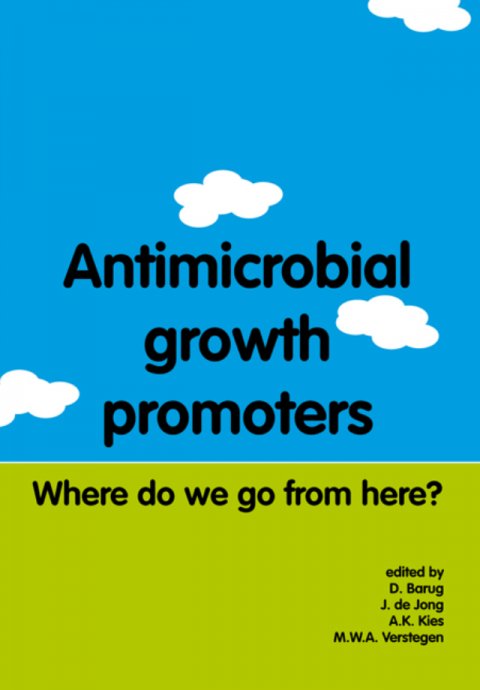
Antimicrobial Growth Promoters
D.Barug,J.de Jong,A.K.Kies, M.W.A.Verstegen
Regulation and its effect on use/no-use of AGPs
£124.00
£137.50
This book contains peer-reviewed papers presented at the international conference "Antimicrobial Growth Promoters: Worldwide Ban on the Horizon?". The book is filled with valuable information on the pros and cons of use of AGPs as well as on alternative nutritional solutions.
It is widely acknowledged that the inclusion of antimicrobial growth promoters (AGPs) in the diet of livestock increases growth rate. However, many questions arise on whether the benefits outweigh the risks, or vice versa. Recent legislative developments in the European Union and USA, recommendations by the World Health Organization, initiatives taken by the food chain, and consumer concerns all point to a widespread (voluntary) removal of antibiotic feed additives for animal growth promotion. In particular, Regulation (EC) 1831/2003 lays down provisions phasing out the authorisations of AGPs in the European Union as from 1 January 2006.
This book discusses how this will affect the use/non-use practice of AGPs. Attention is given to the current status and rational design of developments and strategies for animal feeding without the inclusion of AGPs. Topics covered include benefits and risks of AGPs, risk assessment, consumer concerns and demands, regulatory aspects and international developments, mode of action and innovative alternatives, and recent advances in the analysis of AGPs and related products.
Ideal for professionals and researchers in the feed and food industry.
CONTENTS:
SECTION ONE: Current use of antimicrobial growth promoters in food animals: the benefits
S.W. Page
Abstract
1. Introduction
2. History
3. Mode of action
4. Applications and benefits of AGPs
5. Variation in response to AGPs
6. Recent reviews
7. Emerging applications
8. Conclusions
References
SECTION TWO: Use of antimicrobial growth promoters in food animals: the risks outweigh the benefits
H.C. Wegener
Abstract
1. Introduction
2. European perspective on AGPs
3. Countries’ experience with phasing out AGPs
4. Risk-benefit considerations
5. Conclusions
References
SECTION THREE: Antimicrobial growth promoters: consumer concerns and demands
L. Reijnders
Abstract
1. Introduction
2. Links with a wider debate about intensive animal husbandry
3. Alternatives
4. Trust in industry and regulators
5. Nature of NGO concerns with risks of antimicrobial growth promoters 6210 Antimicrobial growth promoters
6. Conclusion
References
SECTION FOUR: Phasing out antibiotic feed additives in the EU: worldwide relevance for animal food production
A. Chesson
Abstract
1. Introduction
2. The European reaction
3. The Danish “experiment”
4. Relevance of the Danish experiment to other countries
5. Responses in industrialised countries
6. International bodies and AGPs
7. AGPs in developing countries
8. Conclusions
References
SECTION FIVE: Non-human usage of antimicrobials: recent developments at FAO/WHO/OIE
H. Kruse and J. Schlundt
Abstract
1. Introduction
2. Past activities by WHO, FAO and OIE relating to non-human antimicrobial usage and antimicrobial resistance
3. Outcome of the first joint FAO/OIE/WHO expert workshop on non-human antimicrobial usage and antimicrobial resistance: Scientific assessment
4. Outcome of the second joint FAO/OIE/WHO expert workshop on non-human antimicrobial usage and antimicrobial resistance: Management options
5. Follow-up of the joint FAO/OIE/WHO expert workshops on nonhuman antimicrobial usage and antimicrobial resistance
6. Antimicrobial growth promoters
7. Conclusion
References
SECTION SIX: Risk analysis applied to antimicrobial resistance: the OIE approach
J.F. Acar
1. Introduction
2. Risk assessment for analysing the risks to animal and public health from antimicrobial resistant microorganisms of animal origin
SECTION SEVEN: Potential human health impacts of banning antibiotics used in food animals: a case study of virginiamycin
T. Cox
Abstract
1. Introduction
2. Modelling approach, data and methods: The RRRT risk assessment framework
3. Results
4. Discussion
5. Conclusions
Acknowledgments
References
SECTION EIGHT: Terminated use of antimicrobial growth promoters in pig production in Denmark: effects on pig welfare and productivity
N. Kjeldsen and J. Callesen
Abstract
1. Introduction
2. Impact of AGP termination on productivity
3. Economic impact of AGP termination in Denmark
4. Impact on the total consumption of antibiotics
5. Impact on antimicrobial resistance
6. Conclusion
References
SECTION NINE: Termination of AGP use and effect on subsequent production of broiler chickens in Sweden and Denmark during a 25-year period
M. Wierup and H.C. Wegener
Abstract
1. Introduction
2. Material and methods
3. Results
4. Discussion
5. Conclusion
Acknowledgements
References
SECTION TEN: Molecular basis for AGP effects in poultry
M.D. Lee, J. Lu, B. Harmon, C.L. Hofacre, and J.J. Maurer
Abstract
1. Introduction
2. Materials and methods
3. Results and discussion
4. Conclusions
References
SECTION ELEVEN: Rational development of novel microbial modulators
J. Apajalahti and A. Kettunen
Abstract
1. Introduction
2. Antibiotics and coccidiostats as microbial modulators
3. Important shifts in intestinal microbial community
4. Ranking of microbial modulators by simulation
5. Examples of product development by in vitro simulations
6. Significance of the product comparison
7. Conclusions
Acknowledgements
References
SECTION TWELVE: Use of in vitro models of the gastrointestinal tract (TIM systems and bioassays) for studying replacements for AGPs
R. Havenaar, M. Minekus and K. Venema
Abstract
1. Introduction
2. Dynamic gastrointestinal systems
3. Digestion and availability for absorption
4 Organic acids
5. Probiotics
6. Prebiotics and dietary fibres
7. Impact on health of the activity of the large-intestinal microbiota
8. Conclusion
References
SECTION THIRTEEN: An overview of the Feedstuffs-RADIUS project: rapid detection of banned antibiotics in animal feeds
C.T. Elliott, C. Situ, C. van Poucke
Abstract
1. Introduction
2. Banned growth promoters
3. Development of RADIUS screening tests
4. Development of confirmatory tests
5. Survey of animal feeds
6. The future of RADIUS methods
Acknowledgements
References
SECTION FOURTEEN: Towards a control strategy for banned antibiotics and growth promoters in feed: the SIMBAG-FEED project
J. de Jong, M.J.H. Tomassen, H.J. van Egmond, J.A. van Rhijn, T. Zuidema,J. Michard, C. Genouel, G. Brambilla, J.M.G. Nunes da Costa, E. Nordkvist,W. Wagner, A. Thalmann, A. Plöger, G. Rath and C. von Holst
Abstract
1. Introduction
2. Results
3. The proposed control strategy
4. Future work
Acknowledgements
References
SECTION FIFTEEN: Novel approaches for the determination of probiotics in feed in the context of official control
R.G.K. Leuschner
Abstract
1. Introduction
2. Methods of analysis
3. Enumeration methods
4. Molecular identification methods
5. Conclusions
Acknowledgements
References
SECTION SIXTEEN: Pitfalls and challenges for the official control of enzymes in feed
R. Ziebal
Abstract
1. Introduction
2. Methods of analysis of enzyme activities in feed additives
3. Methods of analysis of enzyme activities in premixtures and feeds
4. Problems associated with official control
5. Conclusions
References
SECTION SEVENTEEN: New authorisation of feed additives in the EU: the role of the Community Reference Laboratory and the network of National Reference Laboratories
C. von Holst, A.M. Jensen and G. Simone
Abstract
1. Introduction
2. The tasks of the CRL
3. The evaluation of analytical methods for feed additives – a challenging task
4. The tools of the CRL
5. The evaluation of the analytical methods
Acknowledgements
References
SECTION EIGHTEEN: The role of enzymes and betaine in antibiotic growth promoter free nutrition
M. Hruby and A. J. Cowieson
Abstract
1. Introduction
2. The benefits of AGPs
3. Alternatives to AGPs
4. Nutrition and the intestinal microflora
5. The role of feed enzymes in AGP-free nutrition
6. The role of betaine in AGP-free nutrition
7. Conclusions
References
SECTION NINETEEN: Interfacing gut health and nutrition: the use of dietary pre- and probiotics to maximise growth performance in pigs and poultry
A. Kocher
Abstract
1. Introduction
2. Terminology: pre- and probiotics
3. Gut microbial populations
4. Indigenous beneficial bacteria
5. Probiotics affect intestinal microflora – mode of action
6. Role of carbohydrates in bacterial adhesion
7. The use of oligosaccharides to control intestinal health - prebiotics: mode of action
8. Immunomodulation: activity of pre- and probiotics
9. Effectiveness: pre-and probiotic as a tool to maximise growth performance
10. Conclusions
References
SECTION TWENTY: Acidification of diets as an alternative to antibiotic growth promoters
G. Diebold and U. Eidelsburger
Abstract
1. Introduction
2. Mode of action of organic acids
3. Acidification of diets for pigs
4. Effect of the acid anion
5. Combinations of acid and salt
6. Organic acids and phytase act synergistically
7. Organic acids in poultry
8. Conclusions
References
Are herbs, botanicals and other related substances adequate replacements for antimicrobial growth promoters?
C. Wenk
Abstract
1. Introduction: Herbs and botanicals as alternatives for antibiotics
2. What are herbs, botanicals or essential oils?
3. Modes of action of herbs and botanicals
4. Influence of herbs or botanicals on feed intake and growth performance
5. Antimicrobial and coccidiostatic activity of herbs and botanicals
6. Conclusions
References
SECTION TWENTY ONE: Bacteriophage: a safe and natural alternative to AGPs
W.E. Huff, G.R. Huff, N.C. Rath, J.M. Balog and A.M. Donoghue
Abstract
1. Introduction
2. Materials and methods
3. Results
4. Discussion
5. Conclusions
Acknowledgements
References
SECTION TWENTY TWO: Intestinal genomics for the evaluation of alternatives to AGPs: current situation and perspectives
T.A. Niewold
Abstract
1. Introduction
2. Methodology
3. Current situation and perspectives
4. Conclusion
References
SECTION TWENTY THREE: Nutrition: immunomodulation towards Th1 or Th2 responses
B.M. Goddeeris
Abstract
1. Introduction
2. The immune orchestra
3. The acute phase response and the arachidonic acid cycle
4. Nutritional modulation of immune responses
5. Conclusion
References
SECTION TWENTY FOUR: Setting and meeting standards for the efficient replacement of pronutrient antibiotics in poultry and pig nutrition
G.D. Rosen
Abstract
1. Introduction
2. Materials and methods
3. Results
4. Applications and discussion
5. Conclusions
References
SECTION TWENTY FIVE: Appropriate use of antimicrobial growth promoters: oxymoron or opportunity?
S.W. Page
Abstract
1. Introduction
2. Appropriate use
3. Risk assessment
4. Risk management
5. Conclusions
References
Index
Published: 2006
ISBN: 9789076998879
Details
Type: Hardback
Pages: 422
Language: English
Format: Hardback
Availability: Available
Delivery
This book weighs: 930g
Delivery rates
| Region | Cost |
|---|---|
| UK | £6.00 |
| Europe | £13.50 |
| USA and Canada | £13.00 |
| ROW | £14.00 |
| ROW2 | £31.00 |
Shop By
> Agronomy> Animal Health
> Animal Nutrition
> Context Directories
> Meat Inspection
> Aqua
> Beef
> Dairy
> Equine
> Goats
> Pets
> Pigs
> Poultry
> Rabbits
> Sheep
Related Titles
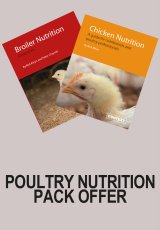
Poultry Nutrition Pack Offer
By Rick Kleyn & Peter Chrystal
£76.50
£108.00
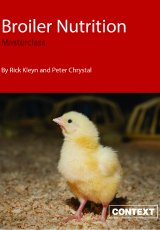
Broiler Nutrition: Masterclass
By Rick Kleyn, Peter Chrystal
£45.00
£54.00
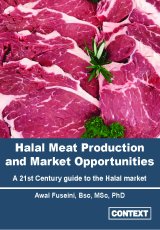
Halal Meat Production and Market Opportunities
By Awal Fuseini
£35.00
£42.00
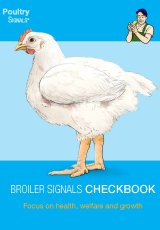
Broiler Signals Checkbook
By Ton van Schie
£43.00
£45.00
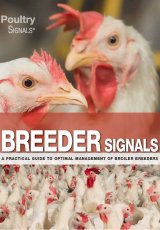
Breeder Signals
By Rick van Emous, Jolanda Holleman, Ton van Schie
£48.00
£50.75
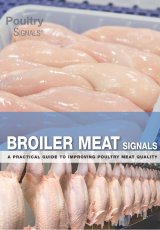
Broiler Meat Signals
By Wim Tondeur and Piet Simons
£48.00
£50.75
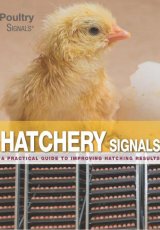
Hatchery Signals
By Sander Lourens
£48.00
£50.75
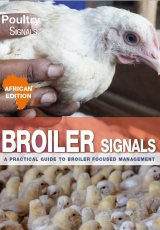
Broiler Signals African Edition
By Maarten de Gussem
£38.00
£39.90
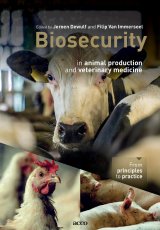
Biosecurity in Animal Production and Veterinary Medicine
By Jeroen Dewulf and Filip Van Immerseel
£62.50
£69.20
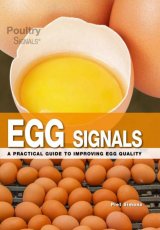
Egg Signals
By Piet Simmons
£48.00
£50.75
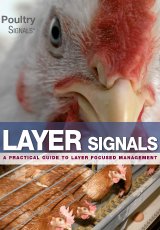
Layer Signals
By Monique Bestman, Marko Ruis, Jos Heijmas Koos Van Middlekoop
£38.00
£39.90
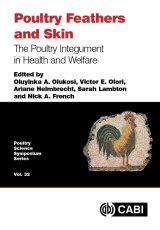
Poultry Feathers and Skin
By Oluyinka A Olukosi, Victor E Olori, Ariane Helmbrecht, Sarah Lambton & Nick A French
£98.50
£109.50
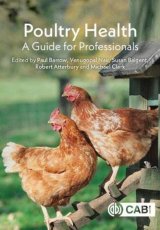
Poultry Health - A Guide for Professionals
By Paul Barrow, Venugopal Nair, Susan Baigent, Robert Atterbury, Michael Clark
£51.00
£56.25
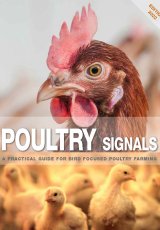
Poultry Signals
By Monique Bestman, Marko Ruis, Jos Heijmans & Koos van Middelkoop
£34.00
£36.00
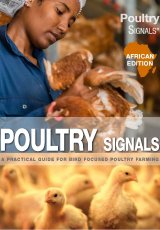
Poultry Signals - African Edition
By Monique Bestman, Jos Heijmans, Koos van Middelkoop, Marko Ruis, Ton van Schie
£38.00
£39.90
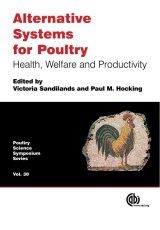
Alternative Systems for Poultry
By V Sandilands, P Hocking,
£103.50
£115.15
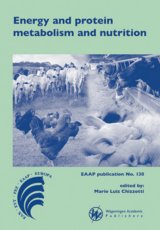
Energy and Protein Metabolism and Nutrition EAAP 138
By Mario Luiz Chizzotti
£142.00
£157.50
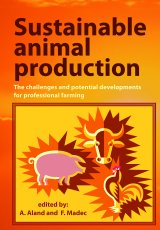
Sustainable Animal Production
By edited by A. Aland and F. Madec
£98.50
£109.17

Antimicrobial Growth Promoters
By D.Barug,J.de Jong,A.K.Kies, M.W.A.Verstegen
£124.00
£137.50
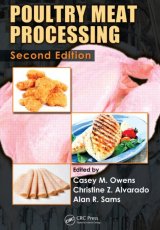
Poultry Meat Processing Second Edition
By Casey M. Owens, Christine Z. Alvarado, Alan R. Sams
£80.00
£85.00
Sorry. You need to upgrade your browser
You are using Internet Explorer 8
This is considered an out of date browser. This website has been developed with modern browsers in mind to allow it to display at its best in a wide variety of viewing situations - including mobile viewing. But we haven't supported older browsers like IE8. Please upgrade to the latest version of Internet Explorer - or try Mozilla Firefox or Google Chrome. Both are excellent browsers.
Thank you.




